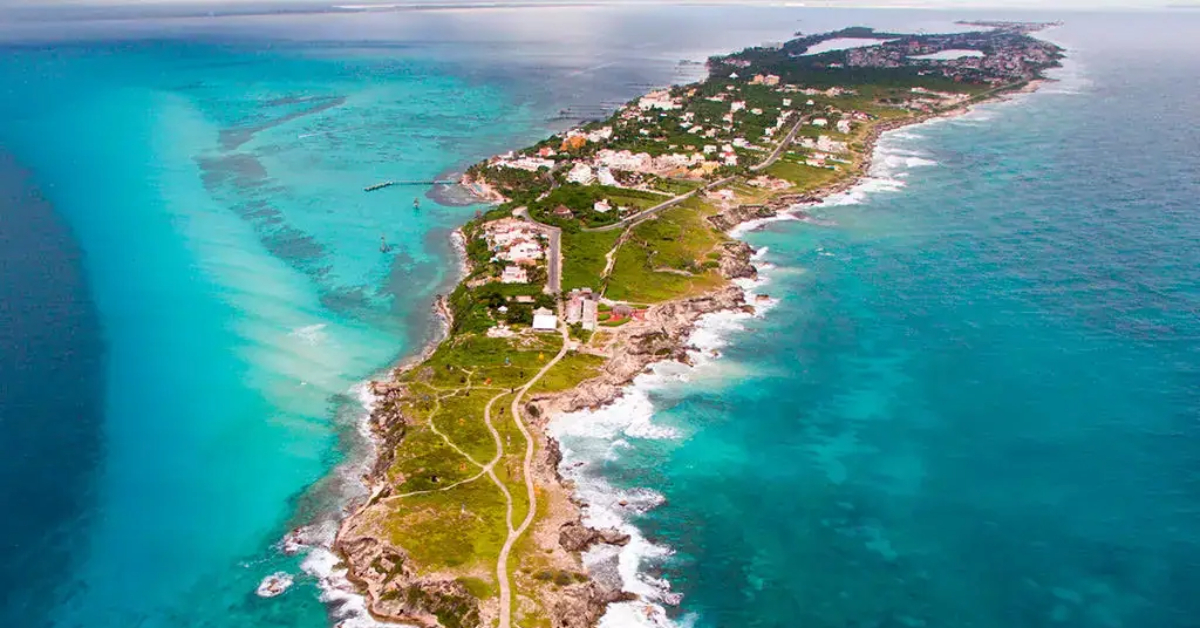Sargassum continues to drive tourists away from Cancún as Isla Mujeres emerges as a clean beach alternative. Learn why this seaweed is impacting travel plans.
Sargassum season is once again making its presence felt along the beaches of Cancún, prompting a wave of visitors to shift their vacation plans toward Isla Mujeres, where the brown seaweed is notably absent. The shift in tourist preferences is already showing signs of boosting the local economy of Isla Mujeres, according to beach vendors, ferry operators, and tourism workers.
With sargassum arriving in large volumes to much of the Mexican Caribbean coast, beaches that were once the face of idyllic vacations are now lined with thick mats of decomposing algae, creating an unpleasant experience for beachgoers. As a result, Playa Norte on Isla Mujeres has become a refuge for those seeking clearer waters and pristine shorelines.
“The beaches in Cancún are full of sargassum, so we decided to take the ferry and come here,” said a tourist from Canada who spent the day sunbathing and snorkeling off Playa Norte. “It’s a huge difference. The water is clean, and there’s no smell.”
Local businesses are feeling the benefits. Tour guides, boat operators, and restaurant owners all report increased traffic as travelers choose Isla Mujeres over the sargassum-plagued mainland. Ferry companies like Ultramar have noted a surge in passenger inquiries specifically asking whether the beaches on the island are free from the seaweed.
Why Isla Mujeres Remains Clean
One of the reasons Isla Mujeres is spared from major sargassum accumulation is its geographic location and ocean currents. Unlike Cancún, Playa del Carmen, and Tulum—which face the open sea—Isla Mujeres lies slightly to the northeast, where currents often divert the floating algae away from the island’s shores. This natural advantage has helped the island maintain a clean, turquoise coastline even during peak sargassum season.
Local officials and tourism promoters have capitalized on this advantage. “We’re not immune to the problem, but we are lucky,” said a beach worker on Playa Norte. “It keeps the island attractive, especially when the rest of the coast is overwhelmed.”
What Is Sargassum?
Sargassum is a type of free-floating brown seaweed that forms large blooms in the Atlantic Ocean. It plays an important role in marine ecosystems, providing shelter and food for various species during its journey across the sea. However, when it washes ashore in massive amounts, it becomes a problem.
The seaweed decomposes rapidly in the sun, releasing hydrogen sulfide—a gas that smells like rotten eggs—and turning clear waters brown. The buildup can also trap sea turtles, suffocate coral reefs, and drive away tourists who come for the white-sand beaches and clear Caribbean water.
Scientists attribute the recent increases in sargassum volume to warming ocean temperatures, nutrient-rich runoff from rivers in Africa and South America, and changing current patterns.
The “Great Atlantic Sargassum Belt,” a stretch of floating seaweed thousands of kilometers long, has been growing over the past decade. Each year, large portions of this belt break off and drift toward the Caribbean and Gulf of Mexico, impacting shorelines from the Dominican Republic to the Yucatán Peninsula.
Tourism Impact
For local tourism-dependent economies, the timing couldn’t be worse. June and July are peak months for international visitors. In Cancún, where sargassum cleanup efforts are ongoing but expensive and time-consuming, hoteliers are seeing growing cancellations or shortened stays. Meanwhile, Isla Mujeres is experiencing a welcome influx.
“We’ve had more people this week than we expected,” said a café owner near the ferry terminal. “They’re all saying the same thing—too much sargassum in Cancún, so they came here instead.”
Tourism officials in Quintana Roo are once again grappling with how to protect the region’s reputation. Long-term strategies—such as sea barriers and early detection systems—have been implemented, but they have not eliminated the issue.
For now, tourists in the know are simply changing course.
Sargassum continues to drive tourists away from Cancún as Isla Mujeres emerges as a clean beach alternative. Learn why this seaweed . . .












